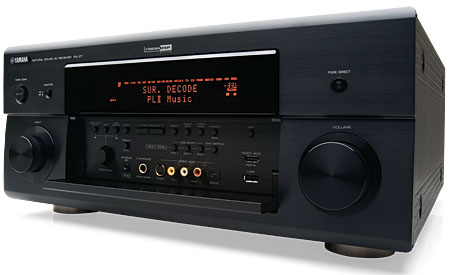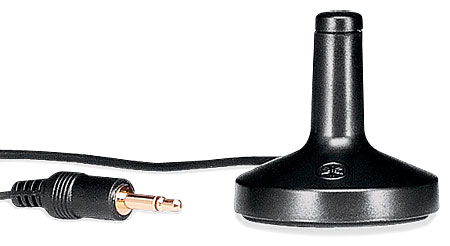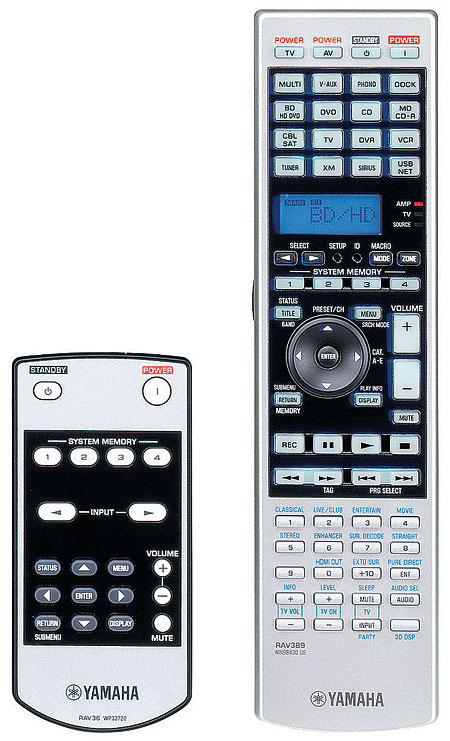Yamaha RX-Z7 A/V Receiver Page 2
The jewels of this AVR are myriad options for digital content access, including not one but several items that cater to PC-centric listeners. These include DLNA (Digital Living Network Alliance) certification for compatibility with networked and mobile audio devices, as well as Windows Vista certification for further access to music, photos, and videos.

You also get Yamaha’s Network Receiver technology, which accommodates up to 15 PCs, Internet radio, and Yamaha MusicCAST audio servers and is compatible with MP3, WMA, and WAV files. There’s also a proprietary Compressed Music Enhancer to make your lossy audio files marginally less nasty.
The back panel includes an Ethernet jack, along with provision for the usual extra-cost iPod dock. USB inputs appear on both the front and back panels. There is no Wi-Fi connectivity option, but the Yamaha is Bluetooth compatible with the pruchase of the optional YBA10 Bluetooth wireless audio receiver ($80). Digital HD Radio augments the customary analog AM and FM. Still more content is available via Sirius and XM satellite radio—including a noteworthy addition, Sirius Internet Radio. This provides 80 channels of content and substitutes an Internet connection for the Sirius antenna. To complement the XM reception, the Yamaha throws in XM HD Surround, which offers discrete 5.1-channel reception with certain XM channels.

Several options are available to adapt two-channel sources to surround, in addition to the usual Dolby Pro Logic IIx and DTS Neo:6 processing. These include SRS Circle Surround II and Neural Surround. I’ve tried them a few times over the years and have yet to find them compelling.
Associated equipment included five Paradigm Reference Studio 20 v4 speakers playing full range and an OPPO BDP-83SE universal disc player. All movie demos were on Blu-ray Disc.
Epic Sweep
The RX-Z7 established its prowess in sweeping cinematic storytelling with part II of Red Cliff: Destiny Lies in the Wind, John Woo’s epic to end all epics, and its dynamically demanding DTS-HD Master Audio soundtrack. Third-century China provides the setting for a massive military conflict between a ruthless warlord and his more reflective and inspired rebel opponents. The rebels wage war with a combination of espionage, guile, folk wisdom, and the use of natural elements as weapons—especially wind and fire. War drums, the roar of horses’ feet, stampeding armies, and other low-frequency commotions gave the Yamaha a chance to show off its bottom end. While I never expect my Paradigms’ 7-inch metal woofers to precisely duplicate the effects of a good subwoofer, they got enough bass power from the Yamaha to convey the explosive flaming power of fish-oil munitions and other abundant thundering effects. The score was a satisfying combination of East and West. The treble was strong enough to be heard above the action, but it didn’t tip over into crudeness. You’ll want to seek out the longer 288-minute international cut and set aside a leisurely weekend to enjoy this incredible feat of large-scale moviemaking to its fullest extent.

Werner Herzog’s The Bad Lieutenant: Port of Call New Orleans arrives with a lossless Dolby TrueHD soundtrack. Nicolas Cage squeezes good cop and bad cop into a single character, with more emphasis on the bad. You know you’re in a Herzog film, as opposed to a traditional Cage vehicle, when the drugged-out detective sees hallucinatory visions of iguanas during moments of stress. Mark Isham—who continues to compose soundtracks full of understated beauty—regales the story with a solo trumpet that repeatedly floats over beautiful strings, with occasional other touches, like some subtle steel drums. Obtaining the right tradeoff between dialogue and effects was never an issue, partly thanks to the Paradigms and partly due to the Yamaha’s crisp, communicative top end.
- Log in or register to post comments




































































